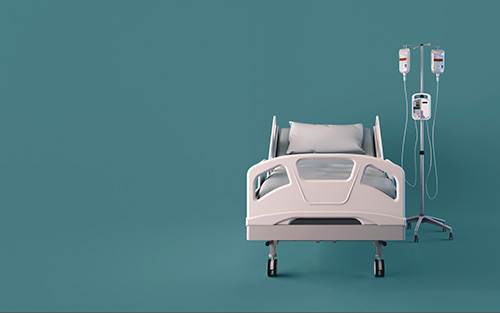 Because they’re largely preventable, bedsores (also known as pressure ulcers or formally, decubitus ulcers), if allowed to occur on patients, can be a healthcare facility’s worst financial nightmare. In today’s healthcare environment, Medicaid pays close attention and monitors the occurrence of new wounds that are considered preventable, pressure related ulcers and will not cover the costs to treat these conditions. This burden, along with potential exposure to liability, falls on the facility.
Because they’re largely preventable, bedsores (also known as pressure ulcers or formally, decubitus ulcers), if allowed to occur on patients, can be a healthcare facility’s worst financial nightmare. In today’s healthcare environment, Medicaid pays close attention and monitors the occurrence of new wounds that are considered preventable, pressure related ulcers and will not cover the costs to treat these conditions. This burden, along with potential exposure to liability, falls on the facility.
These injuries to the skin and underlying tissues caused by prolonged pressure on the skin (especially bony areas of the body, such as ankles, hips, buttocks or heels), are, according to Mayo Clinic, more easily prevented than they are treated.
Prevention, the experts at the Mayo Clinic suggest, is accomplished by a providing a combination of aggressive patient care protocols and the use of “special cushions, foam mattress pads…[that] can help a person lie in an appropriate position, relieve pressure and protect vulnerable areas from damage.”
Putting the Squeeze on Pressure
A critical component in medical bedding that helps mitigate the risk of bedsores are the medical fabrics that form the surface of the mattress support systems and come into closest contact with patients.
The advanced engineering techniques found in Sure-Chek, are designed to control the stretch of the mattress fabric so that it performs consistently and predictably. A medical mattress fabric such as Sure-Chek Fusion III HP stretches in both directions (four-way stretch), horizontally and vertically, where other fabrics only stretch in one direction (two-way stretch) before returning to their originally state (known as “recovery”).
This is important to risk managers at healthcare facilities, because the more stretch a medical fabric has, the more the surface material can conform to the engineering of the internal support pressure management system. This is a key function of medical bedding that controls weight pressure to the patient’s body. The lower the interface pressure between patient and the medical bedding, the better. This minimizes the potential for new sores while preventing any existing sores from worsening.
The recovery phase of the medical fabric helps to return the material to its original state, preventing pinching of the patient’s skin and providing a neater appearance as well.
Fabricating a Plan to Prevent Pressure Ulcers
The Mayo Clinic is not alone in their recommendation of the use of special foams to ergonomically manage pressure for those patients chronically confined to a bed. The National Institutes of Health also recommends using “items that can help reduce pressure,” WebMD is another advocate for the use of these materials.
As part of a comprehensive program to prevent pressure ulcers, medical fabrics such as Sure-Chek ergonomic pressure management fabrics can help healthcare facilities mitigate the expenses associated with their care and perhaps even eliminate the liability litigation it may bring. Look for omnidirectional (four-way) stretch in mattress coverings to provide maximum support for the pressure management system underneath and optimal recovery to prevent patient pinching.